Is this really our last but one day of the trip? Today we get to hear the Croatian view of the world. We have docked in Vukovar, Croatia’s largest river port, located at the confluence of the River Vuka and the Danube.
There is immediate and dramatic evidence of a brutal war – the Croatian War of Independence. A totally wrecked building that used to be a hotel faces the dock. The Vokovar Hilton? Plans exist to convert it into university student accommodation.
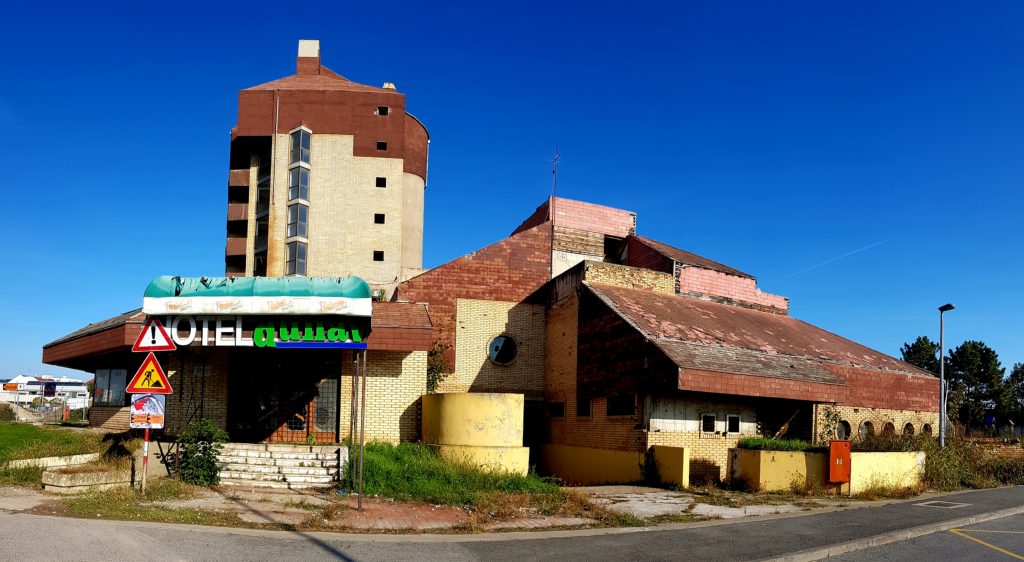
In the distance, the iconic 42 metre tall water tower which sustained an incredible 600 direct hits (although I don’t expect counting to have been too accurate at the time!). It will be retained in its current state as a reminder of the horrors of war.
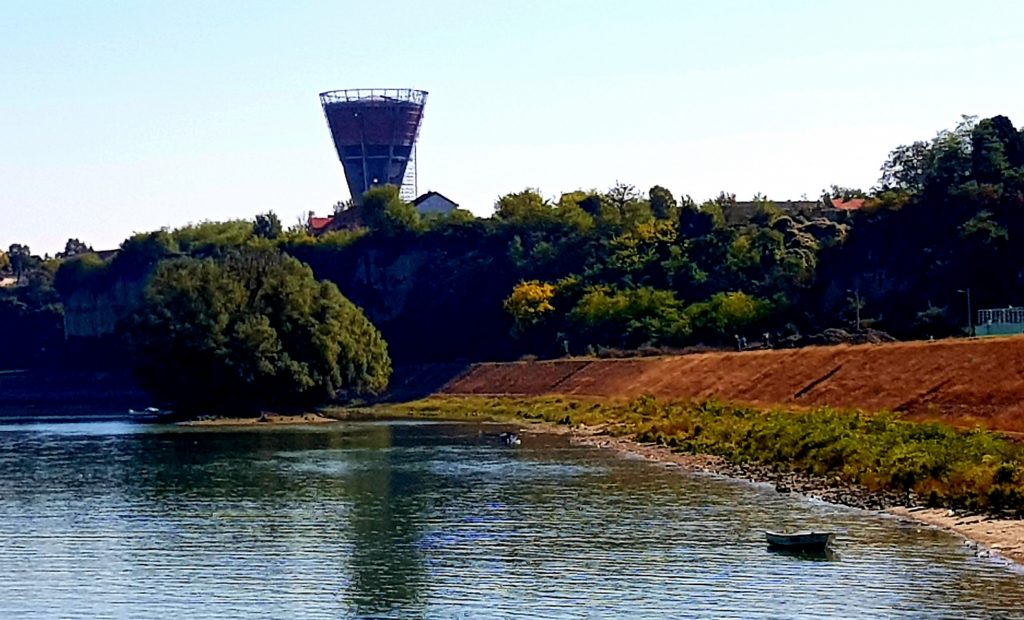
Sadly, that was the best photo I got. However – borrowed from the internet…
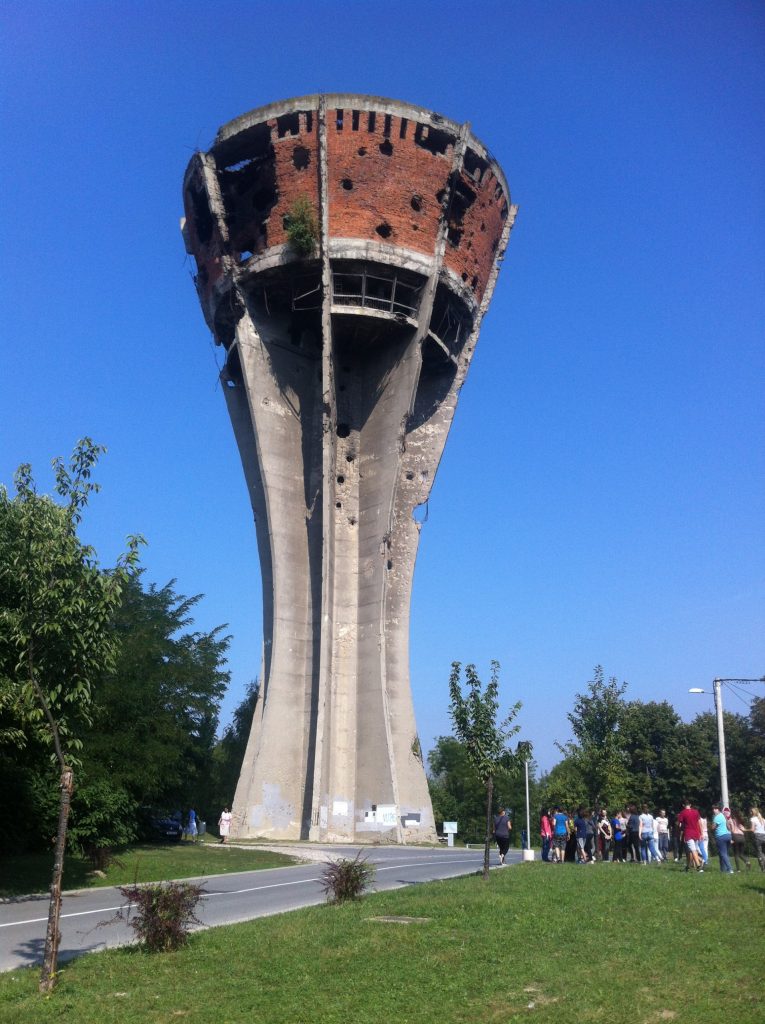
We set off walking past the “Hilton” across broken ground. But it soon became obvious that a lot of restoration had taken place and was continuing. I’m guessing a lot of EU money is being spent here. The buildings are looking much smarter than in other places we’ve visited recently.
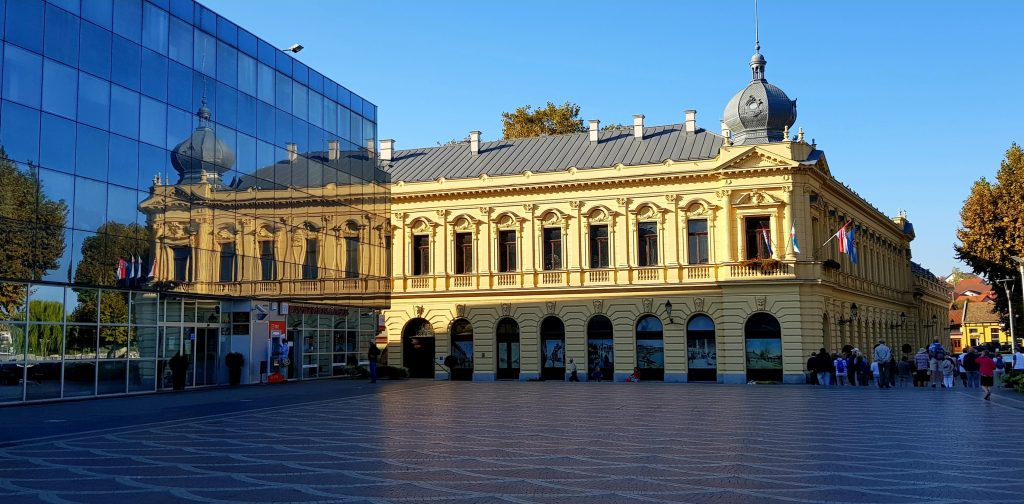
The old reflected in the new. To be fair, while the “old” has been lovingly restored on the outside, internally it’s still a wreck. I think it used to be the town hall (or equivalent). I’m sure the “new” will be a bank!
The roads and pavements are being improved. There was generally a happy feel about the place. The locals looked more enthusiastic.
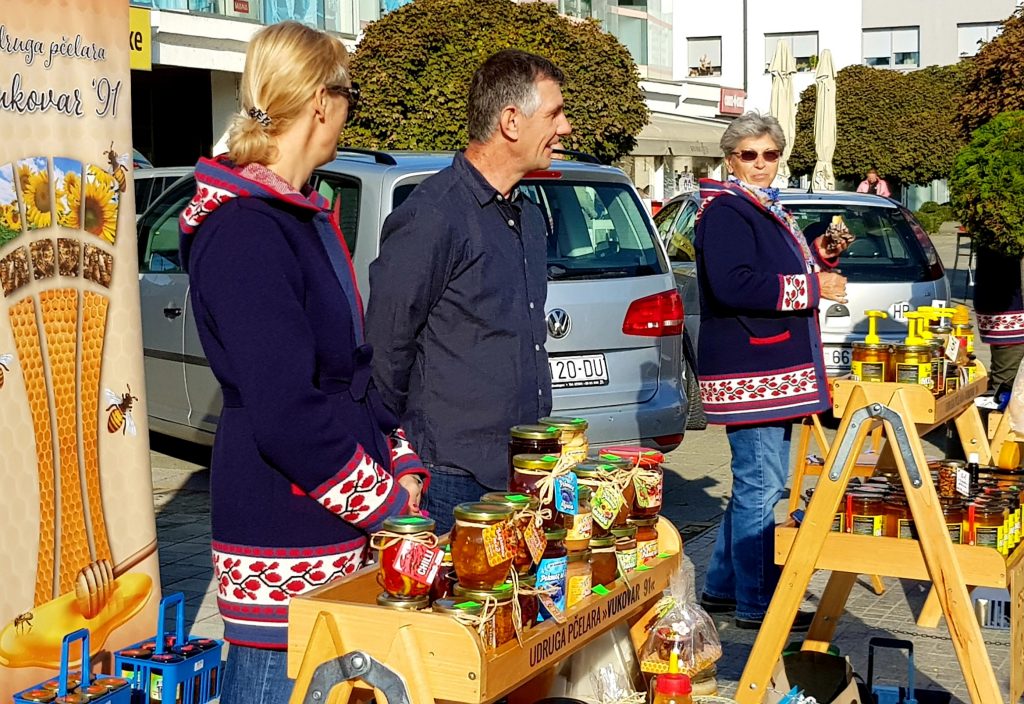
We were told of the significance of the red and white borders to their clothes. That’s why I took the photo. But for the life of me, I can’t remember what it was! Sorry!
Franjo Tudjman was the first president of Croatia after the Croatian War of Independence. He is commemorated in a statue just off the main square.
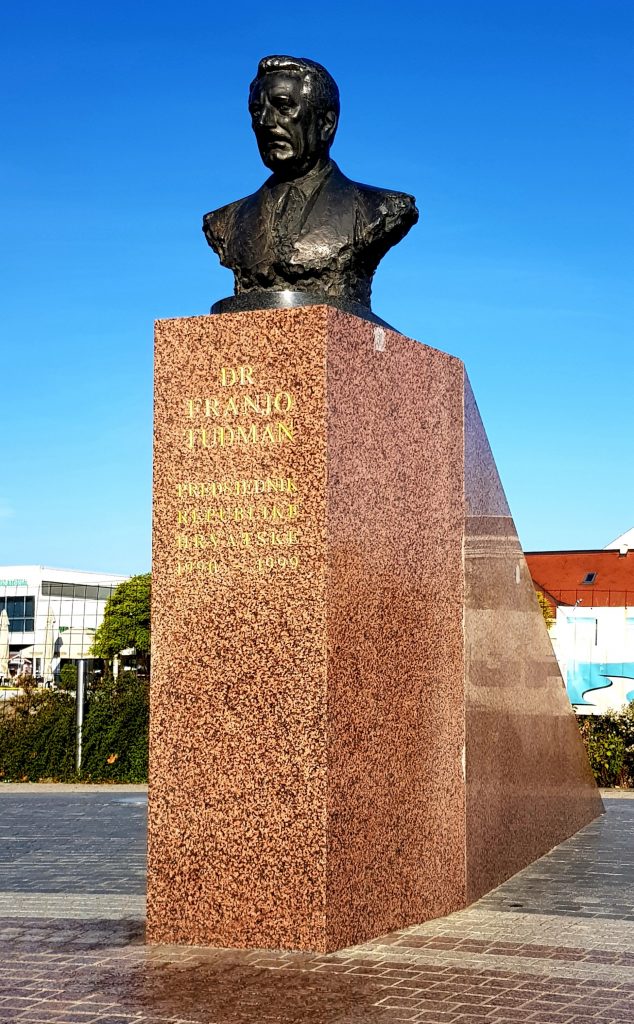
The city’s population of 45,000 before the war was ethnically very mixed. Serbs and Croatians lived side by side. There were many mixed marriages. Many “inter-racial” friendships existed.
President Tito kept the six “countries” + Kosovo together as Yugoslavia. Everyone was employed. They had enough money to take, for example, an annual holiday to the Adriatic coast. Not so now. Under Tito people were paid 78% (now 38%) of their salary in retirement! When he “nationalised” land, farmers were allowed to keep 10 – 15 hectares for their own use. Tito was known as the “Benevolent Dictator”.
So it wasn’t all bad. He stood up to Stalin and gained some respect for that. Allegedly, Stalin sent many assassins to try to bump him off – but they all failed. In the end, Tito warned Stalin that he would send an assassin back and that he wouldn’t need to send a second one!
After galloping inflation, 100m Dinar not enough to buy a loaf of bread. Everything was rationed – either that or just totally unavailable. Cars could only be used on alternate days. Presumably those registered with odd numbers could be driven on odd numbered days of the month and even on even. I suppose cars with odd numbered registration plates were more valuable because, by my reckoning, they could be driven for two (or occasionally three) more days a year than even numbered cars!
Anyway, back to the potted history of the Federal Republic of Yugoslavia… The leaders of the various states took turns at being president of the whole country. Slobodan Milošević (Serbian) was the last and rather infamous president.
In 1991 Croatia voted for Independence (sort of Croexit!). No one thought a war would ensue. However, on 25 August the first bombs started falling. 50,000 soldiers attacked the city of Vukovar which was defended by a force of just 1,800 of whom 1,200 were civilians! This small, heroic band held off the invading forces for three months. This gave the rest of the country time to organise and raise a proper army. Apparently, about 10,000 shells landed on the city every single day. On 18 November Vukovar was over-run and occupied. Our guide escaped the city with his mother on the night the city fell. They were amongst the very last to escape. They travelled by car cross-country and fled to Germany for the duration of the war. It sounded like they had been incredibly lucky to survive. And lucky they had an even numbered car!
In January 1998 he returned to Vukovar. Unsurprisingly, he found racial tensions were extreme. It was not until 2003 that the first “mixed marriage” occurred. Now, officially, the city has 147 Croatian-Serbian married couples. In Vukovar segregation is now totally finished. Except, would you believe, in schools. In this city, schools remain COMPLETELY segregated to the present day. Serbian children go to Serbian schools and Croatian kids to Croatian institutes. No Serbian can teach or work in a “Croatian school” and vice versa.
Allegedly there are still 50,000 hectares of unmapped and uncleared minefields in Croatia. (To put that into perspective, that’s about 50,000 international rugby pitches. Not far off the size of Dartmoor.) These are largely in swampy areas – so rugby is probably a fairly safe game to play in Croatia. Mine clearance personnel were paid the same as road sweepers until they went on strike. Now they are paid a little more. But not much more!
Now back on the buses for a trip to the fortified town of Osijek. The town had about 108,000 inhabitants but since 2013, the brain-drain to the Western EU countries has reduced this by a staggering 20% to about 85,000.
Apart from the fort, the main event in town is the university with its 19 faculties and 20,000 students. I understand the teaching is mainly done in English and German. There is also a little church – the Church of St Anthony and a monastery – I’ll come back to them in a minute. Very signicantly, on the edge of town there are three large factories making soap, beer and chocolate respectively.
I was overruled, but I had voted to skip the tour of the fort and hit the M&M factory! (By the way, did you know that “M&M” stands for “Mars & Murrie”? In 1941 Forrest Mars of the Mars Candy Company joined forces with William Murrie, the then president of the Hershey Company. They wanted to make a sweet with a hard shell and chocolate in the middle. Stick with me and you’ll learn lots of stuff – mainly useless! The rumour that M&Ms are made in town is one that I started! I just wanted to get that factlet in!)
So, the fort was next on our agenda! No chocolate! It used to look like this relief model …
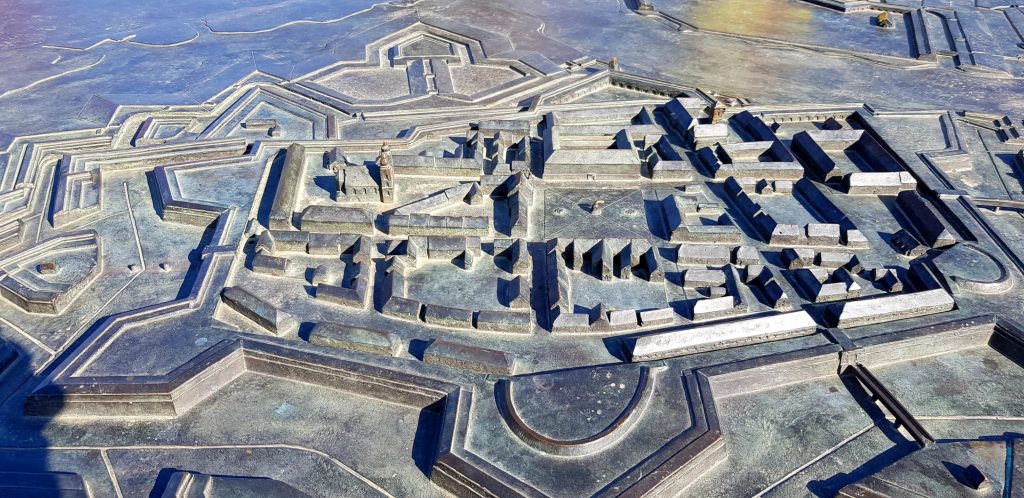
… but much of the walls have been lost to the ravages of time and wars. Walking through the town streets there was lots of evidence of small arm fire…
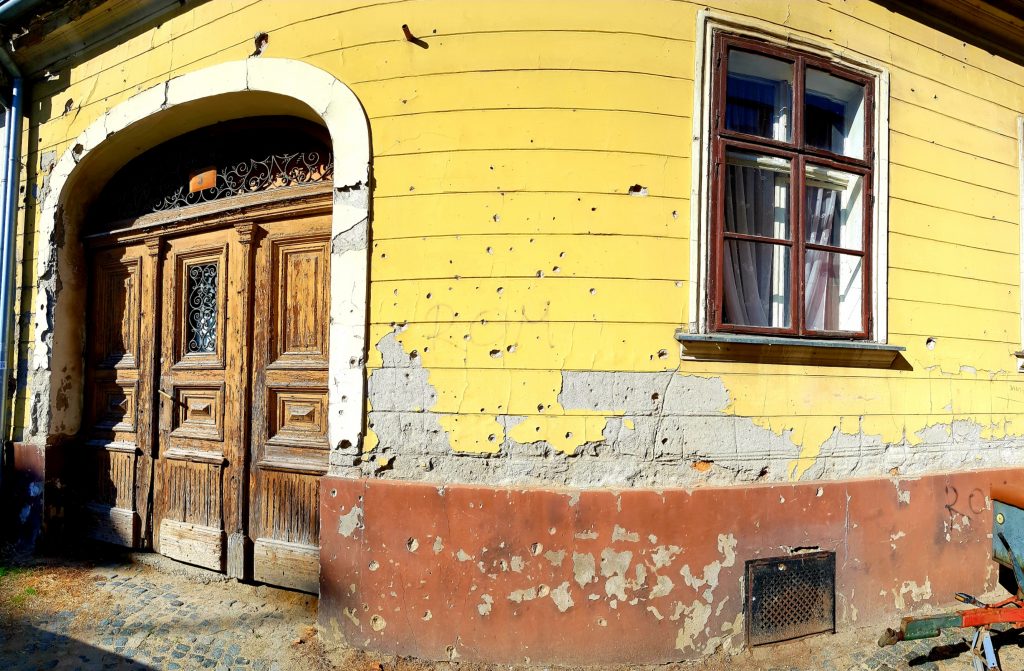
Leaving the fort by the last remaining gate beside the River, aptly named the Water Gate, we got an impression of what the walls used to look like all round.
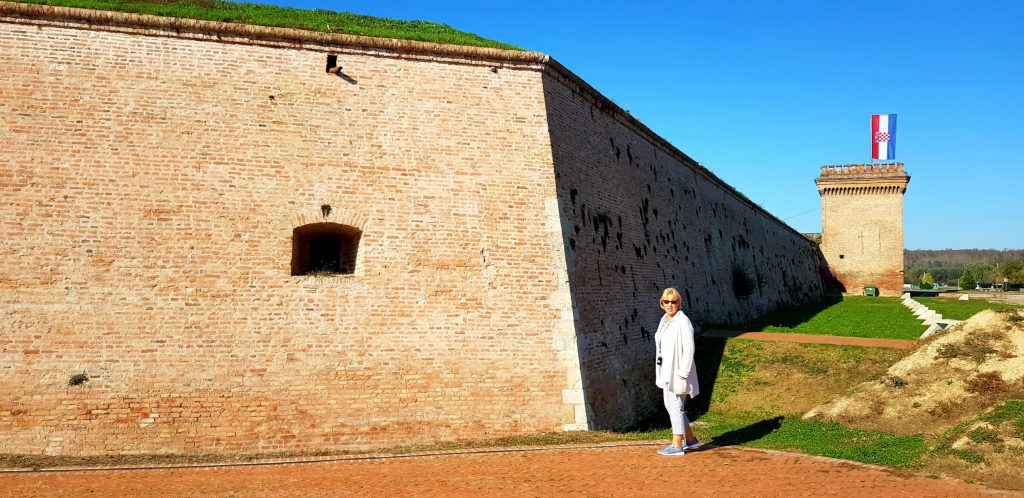
We then ducked into the Franciscan monastery by one of the back doors. A big place …

… with memorials to the hundreds of Jews murdered in the town.
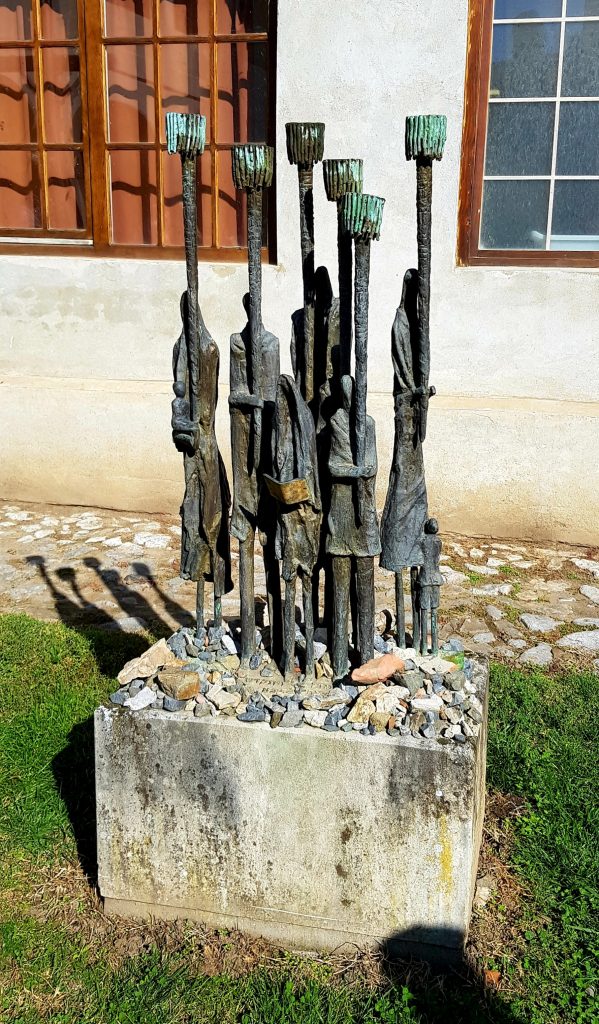
Within the monastery the Church of Raising the Holy Cross is spectacular …
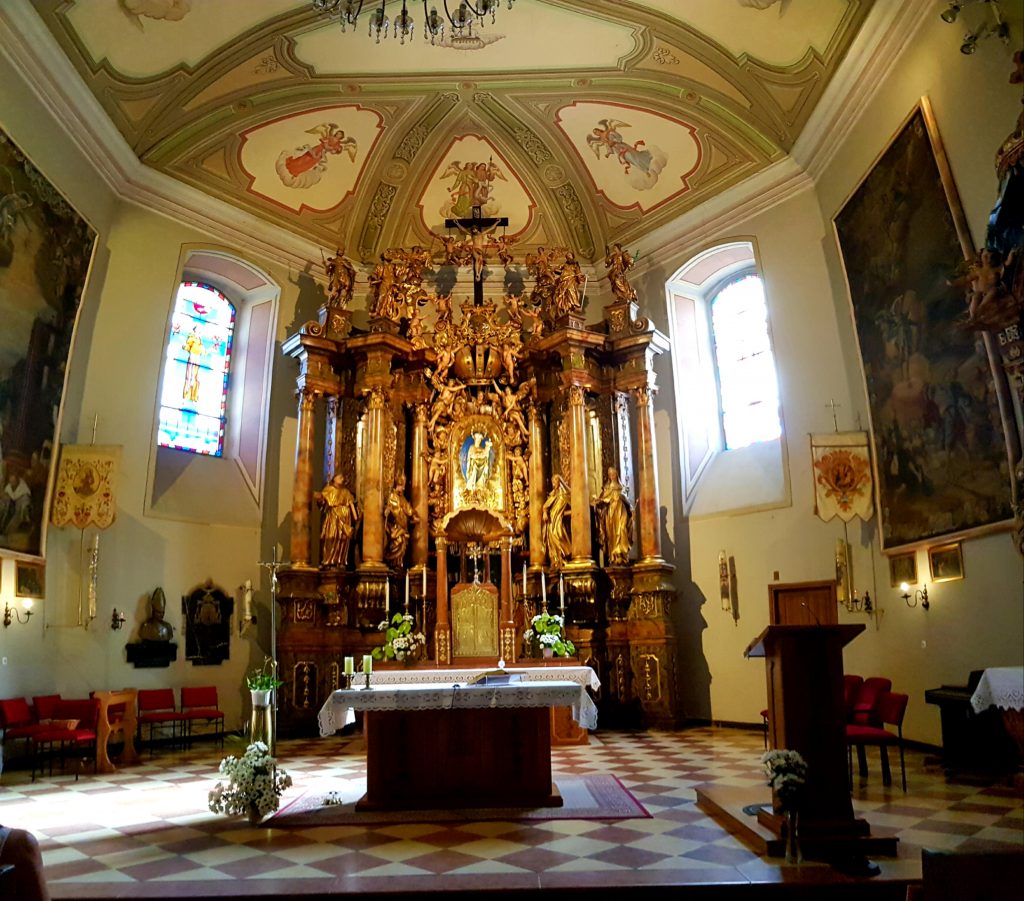
Now we are off through the town on our way to another much smaller church. St. Anthony’s. But on the way we passed through some restored areas and through the square with its compulsory memorial to the plague victims. The Holy Trinity Column.
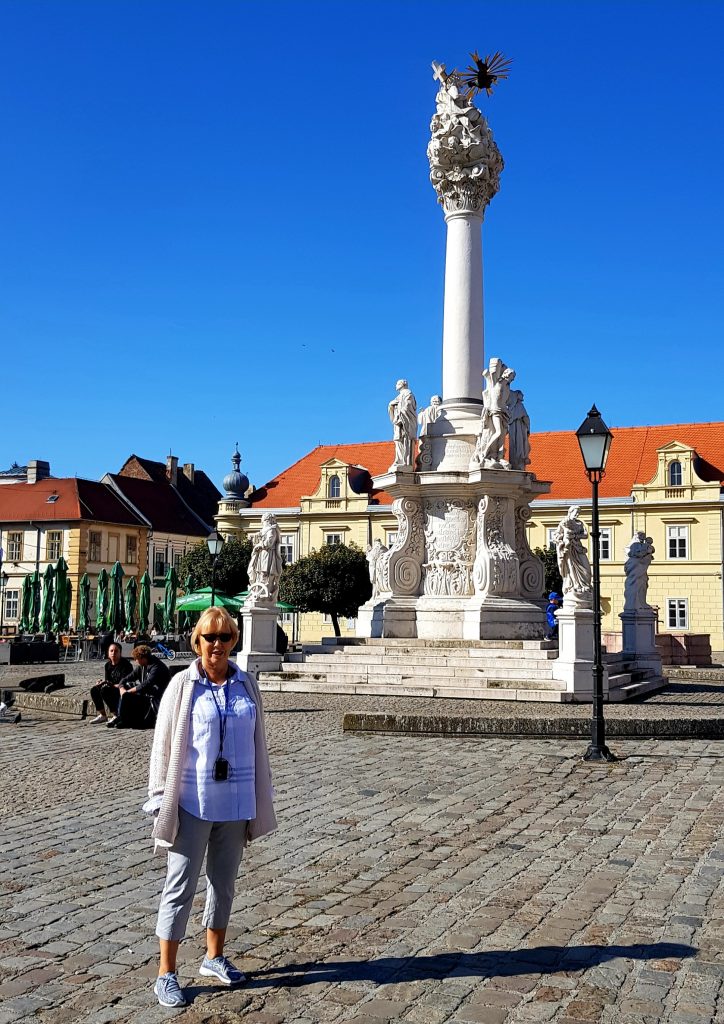
We heard stories of pine martens being introduced to the town to control rats. This was an attempt to stop the transmission of the plague. The alternative name of the pine mart marten is the Kuna. This is also the unit of the national currency. The marten became the Croatian national emblem in 1941 and so it appears in coat of arms on the national flag.
Before we got to our target church I took this photo. It’s the only photo I have of our Cruise Concierge. Andras’ right hand man. I captured his better side!
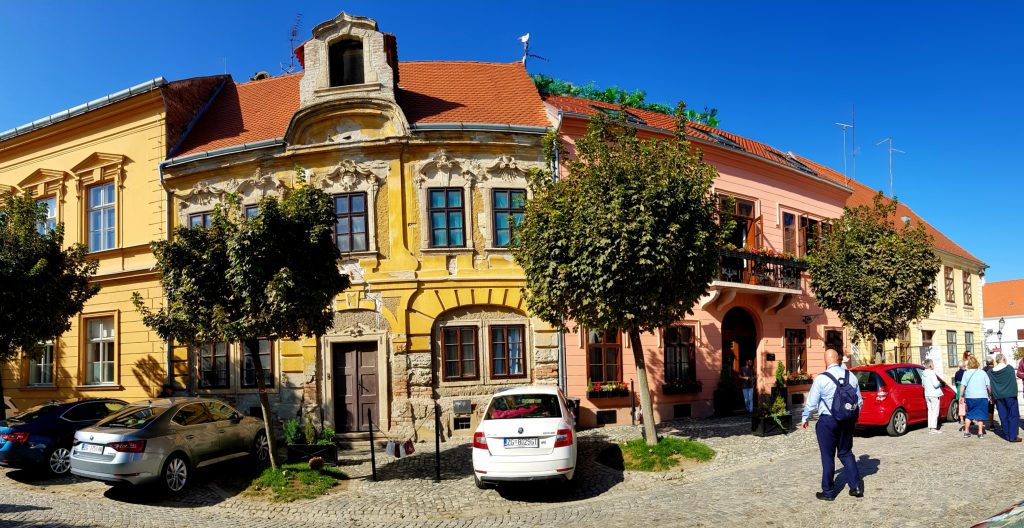
OK. So now the unlikely story of the church of St. Anthony of Padua. It was built by the Franciscan monks in 1732.
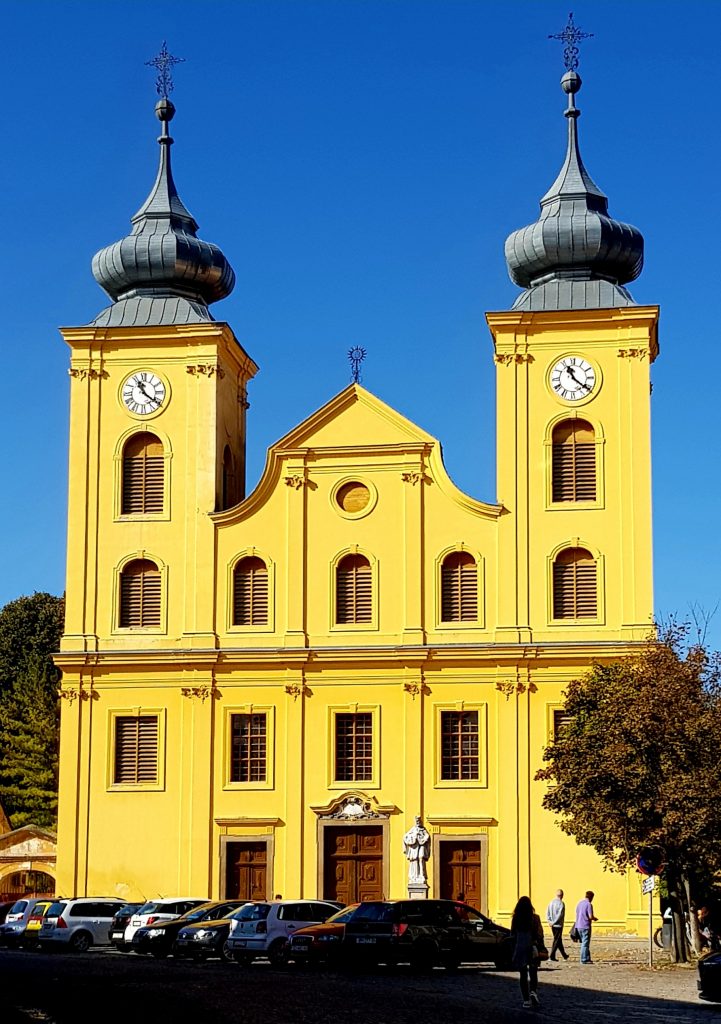
St. Anthony’s Feast happens every year on June 13. On this day thousands of believers flock to the area for the confessions and to see the church. This pilgrimage is one of the biggest events in Osijek. Up to 30,000 people cram into the town and church – in shifts, obviously. Holy Mass begins at 3 o’clock in the morning and continues in eleven separate services until the evening with last mass at 9 pm.
St Anthony is the patron saint of lost property and lost causes. Which is handy because with all that lot, I bet there are plenty of lost umbrellas etc. Amazingly, the church escaped damage in three successive wars (apart from broken glass windows).
On the drive back to the ship our guide gave us another insight into Croatian life. Weddings. Big things Croatian weddings Starter-sized ones might typically have 300 guests while large events can easily have more than 1,000 invitees! They are often three day events. The stag (and hen?) party on day one (Friday). Fun and games on day two with music and parades through the town. At about 6 pm the wedding ceremony takes place. This is followed by a party running into the third day (usually the Sunday). Weddings can easily cost 16,000 Euros! Eloping doesn’t work – all your friends will be furious! Good story!
A final thought for the day… An official survey concluded that Croatia has most corrupt government in Europe. Apparently, Romanians are disputing this!
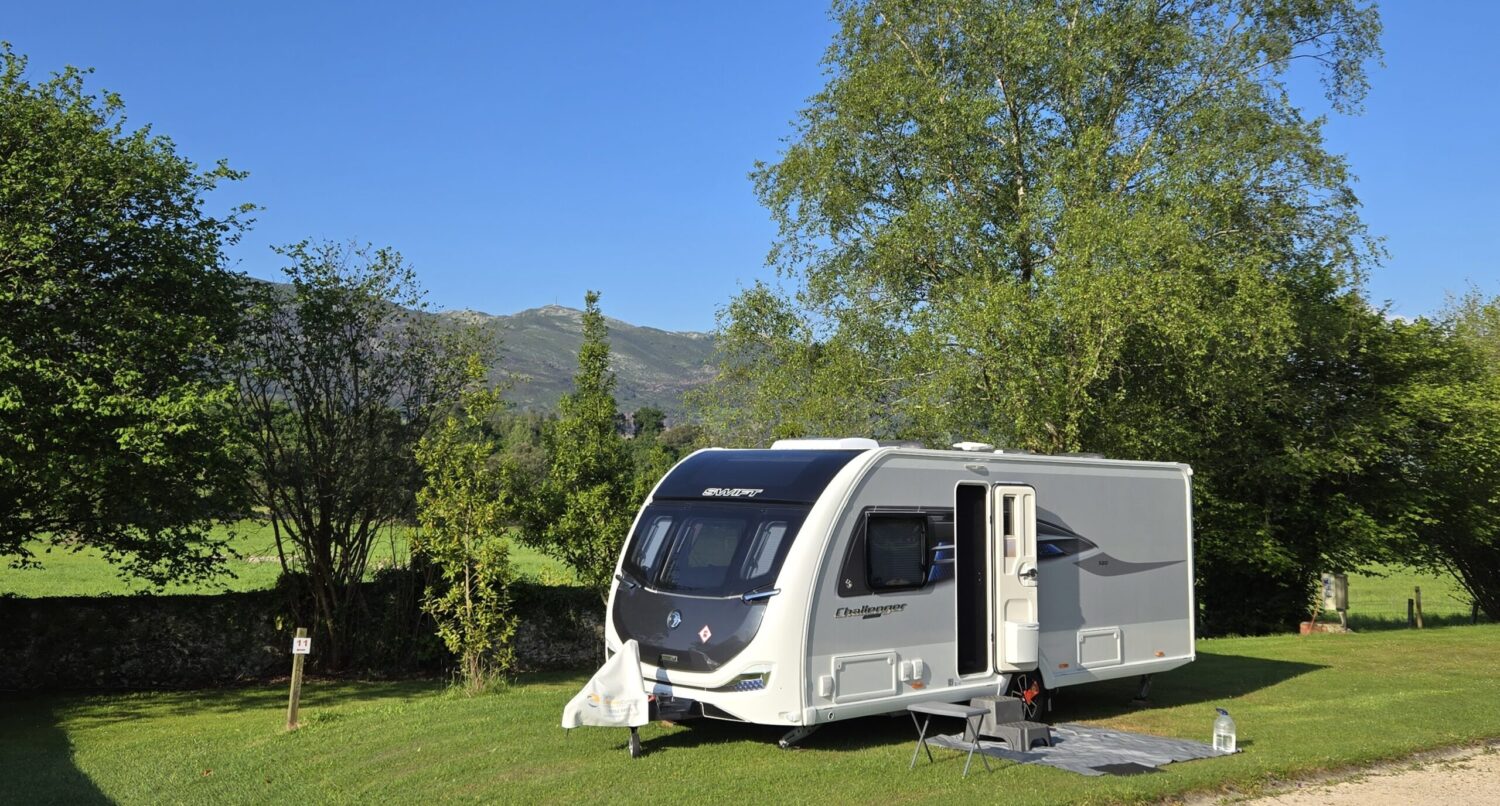
Loved reading about your latest adventures, told in your inimitable style, John. Lots of grim places on the trip, but, as you have written, all very interesting.
Our recent river cruise – Amsterdam to Budapest – was far more predictable, if I can put it that way. 150 passengers – 40 percent Aussies, 40 percent Canadian and the rest Americans, Kiwis and Brits. One English chap said he was a former talent scout for Nottingham Forest, and, I am inclined to believe him.
The Gorges du Tarn highlighted the second part of our Euro trip, especially as we stayed in a castle.
One of my brothers has just returned from a holiday in the UK, staying with a friend on the edge of Dartmoor.
Keep well, and look forward to more posts.